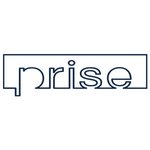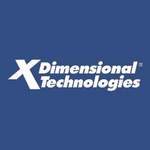Description

OneShield Policy

UIS Policy Administration
Comprehensive Overview: OneShield Policy vs UIS Policy Administration
Comprehensive Overview of OneShield Policy and UIS Policy Administration
a) Primary Functions and Target Markets
OneShield Policy: OneShield Policy is a comprehensive policy management solution designed specifically for the insurance industry. Its primary functions include policy administration, billing, claims management, and customer engagement. It aims to streamline the entire lifecycle of insurance products from policy quoting to issuance, amendments, renewals, and cancellations.
Target Markets: OneShield Policy targets a broad range of insurance providers, including property and casualty insurers, life insurers, and general insurance companies. The system is scalable and caters primarily to mid-sized to large insurance carriers seeking robust, customizable solutions to automate and manage complex insurance processes.
UIS Policy Administration: The UIS Policy Administration system is designed to offer a flexible and efficient policy management experience for insurers. Its functions encompass policy creation, management, endorsements, renewals, cancellations, and reporting services. Emphasizing user-friendly configurations, it supports insurers in designing products rapidly and efficiently.
Target Markets: UIS Policy Administration mainly targets small to mid-sized insurance companies, niche insurers, and MGAs (Managing General Agents) looking for solutions that can be easily configured to meet specific business needs, offering more streamlined and less complex functionalities compared to OneShield.
b) Market Share and User Base Comparison
OneShield Policy: OneShield has a prominent position in the market, especially among larger insurance carriers due to its comprehensive suite of features and high scalability. Though exact market share figures are proprietary and may vary, OneShield is considered a leading player among the top-tier insurance software vendors. Its user base typically includes larger insurers that need robust, custom solutions capable of handling high volumes of transactions.
UIS Policy Administration: UIS, often favored by smaller insurers and niche market participants, holds a more modest market share. Its user base is generally smaller than OneShield's, often comprised of companies that prioritize ease of use and speed-to-market over comprehensive feature sets. UIS may not have the penetrative reach in large enterprises like OneShield but appeals to niche players needing a nimble solution.
c) Key Differentiating Factors
OneShield Policy:
- Scalability and Customization: OneShield offers extensive scalability and customization options, making it suitable for large insurance providers.
- Integrated Suite: It provides a fully integrated suite including claims, billing, and customer management, offering a unified solution.
- Regulatory Compliance: Strong compliance support through regular updates and adherence to global and regional insurance regulations.
- Complex Process Support: OneShield is capable of handling complex insurance processes and products which require significant customization.
UIS Policy Administration:
- Ease of Use and Implementation: UIS focuses on user-friendly interfaces and easier implementation processes, making it suitable for smaller players with fewer IT resources.
- Cost-Effectiveness: Generally more cost-effective for smaller insurers due to straightforward requirements and less complex setups.
- Flexibility: Offers high flexibility for product configuration, allowing insurers to bring new products to market quickly.
- Targeted Solutions: Often provides more personalized service and support to its customers due to its targeted market focus.
In summary, OneShield Policy and UIS Policy Administration serve different segments within the insurance industry, with OneShield being more suitable for larger operators needing comprehensive and highly scalable solutions, while UIS is optimal for smaller, agile insurers seeking efficient, targeted tools without the complexity and cost associated with larger systems.
Contact Info

Year founded :
Not Available
Not Available
Not Available
Not Available
Not Available

Year founded :
Not Available
Not Available
Not Available
Not Available
Not Available
Feature Similarity Breakdown: OneShield Policy, UIS Policy Administration
When comparing OneShield Policy and UIS Policy Administration, both of which are policy administration solutions often used by insurance companies, it's important to consider their core features, user interfaces, and any unique offerings. While I don't have access to specific proprietary feature lists of these products, I can provide a general breakdown based on common industry practices and known capabilities for similar software.
a) Core Features in Common
-
Policy Lifecycle Management: Both systems manage the entire policy lifecycle from creation to renewal, including underwriting, quoting, and issuance.
-
Billing and Invoicing: They offer integrated billing features to handle invoicing, payments, and collections seamlessly.
-
Claims Management Integration: Both platforms typically integrate with claims management systems to streamline operations.
-
Regulatory Compliance: They ensure adherence to insurance regulations and standards, providing built-in compliance tools.
-
Product Configuration: Allows users to configure insurance products, rates, and rules without heavy IT involvement.
-
Data and Reporting: Standardized reporting and data analytics to drive business insights and enhance decision-making.
-
Customer and Agency Management: Functions for managing customer profiles and interactions, as well as agent and broker networks.
-
Automation: Workflow automation to improve operational efficiency, such as automated renewals and notifications.
b) Comparison of User Interfaces
- OneShield Policy:
- Typically offers a modern and intuitive user interface designed for ease of use and quick navigation.
- Customizable dashboards and user-friendly navigation are emphasized to enhance user efficiency.
- Often includes role-based access controls to tailor the user experience based on job functions.
- UIS Policy Administration:
- Known for a user-friendly interface that aligns with current UI/UX standards in insurance software.
- Provides customizable layouts and dashboards for a personalized user experience.
- Emphasizes quick access to key features and data visualization tools.
c) Unique Features
-
OneShield Policy:
- Some versions of OneShield may offer extensive third-party integration capabilities, enabling seamless connections with a wide variety of external systems.
- Focus on scalability for larger enterprises with complex needs, potentially offering modules specific to different types of insurance.
-
UIS Policy Administration:
- May include unique out-of-the-box specialty insurance templates that allow quick deployment.
- Offers innovative underwriting tools that provide advanced risk assessment capabilities beyond standard offerings.
Both platforms are robust and designed to streamline policy administration for insurance firms, but their unique strengths and additional capabilities might be better suited for different types of insurance providers based on specific business needs and IT ecosystems. Always refer to the latest product documentation or contact the vendors directly for the most accurate and specific feature comparisons.
Features

Not Available

Not Available
Best Fit Use Cases: OneShield Policy, UIS Policy Administration
OneShield Policy and UIS Policy Administration are both policy administration software solutions designed to cater to the insurance industry, but they have different strengths and are suited for different types of businesses, projects, and scenarios. Here's a breakdown of their best-fit use cases:
a) OneShield Policy
Best Fit Use Cases:
-
Large Enterprises and Insurers: OneShield Policy is ideal for large insurance companies that require a robust and highly scalable solution. It can handle complex operations and a large volume of transactions efficiently.
-
Complex Product Portfolios: Companies with a diverse range of insurance products including personal, commercial, specialty lines, and more, can benefit from OneShield’s ability to support complex product configurations.
-
Customization and Integration Needs: Enterprises needing a highly customizable solution with extensive integration capabilities with other enterprise systems (e.g., CRM, billing, claims) will find OneShield Policy particularly advantageous.
-
International Operations: Insurance companies with multi-national operations will appreciate OneShield’s support for multiple languages, currencies, and regulatory requirements across different geographies.
-
Long-term Strategic Projects: Organizations looking to undertake long-term projects that aim to transform their policy administration through digital enhancements and automation will find OneShield’s capabilities match well with these goals.
b) UIS Policy Administration
Preferred Scenarios:
-
Small to Medium-sized Insurance Companies: UIS Policy Administration is well-suited for small to mid-sized insurers that need a cost-effective, straightforward solution for managing policy administration.
-
Rapid Deployment Needs: For businesses that require a quick implementation with minimal customization, UIS Policy can offer a more streamlined setup compared to more complex systems like OneShield.
-
Standardized Products and Processes: Companies that primarily offer standard insurance products and have relatively straightforward business processes can efficiently use UIS Policy Administration.
-
Resource-Constrained Environments: Organizations with limited IT resources or budgets may prefer UIS Policy due to its relative simplicity and lower total cost of ownership.
d) Industry Verticals and Company Sizes
Industry Verticals:
-
OneShield Policy: This is very versatile across various verticals, accommodating the needs of industries like commercial, personal, and specialty insurance. Its flexibility allows it to cater to niche markets that require unique product offerings.
-
UIS Policy Administration: This is more suited to traditional, straightforward insurance sectors, such as property and casualty (P&C) insurance, where processes are standardized, and customization needs are less demanding.
Company Sizes:
-
OneShield Policy: Targets large enterprises and growing medium-sized businesses that expect to scale their operations. Its comprehensive features and customization capabilities make it suitable for handling intricate business requirements.
-
UIS Policy Administration: Best for small to mid-sized companies looking for an affordable solution with essential functionalities. It is particularly beneficial for those who plan to remain within a certain operational scope without the complexities of large-scale implementations.
In summary, OneShield Policy is the best choice for larger, more complex insurance organizations with broad needs for customization and scalability. In contrast, UIS Policy Administration is preferred for smaller to mid-sized insurers that value simplicity and cost-effectiveness, focusing on basic administration needs without extensive customization.
Pricing

Pricing Not Available

Pricing Not Available
Metrics History
Metrics History
Comparing undefined across companies
Conclusion & Final Verdict: OneShield Policy vs UIS Policy Administration
When evaluating OneShield Policy and UIS Policy Administration, it is essential to consider various factors such as cost, features, scalability, usability, customer support, and integration capabilities. Here is a comprehensive conclusion and final verdict:
Conclusion and Final Verdict:
a) Considering all factors, which product offers the best overall value?
Best Overall Value: Determining the best overall value between OneShield Policy and UIS Policy Administration ultimately depends on the specific needs and priorities of the organization considering these products. If a company prioritizes comprehensive features, seamless integrations, and continuous scalability, OneShield Policy might offer a better overall value. On the other hand, if ease of use, competitive pricing, and customization are more critical, UIS Policy Administration might be more suitable.
b) What are the pros and cons of choosing each of these products?
OneShield Policy:
-
Pros:
- Comprehensive Features: OneShield Policy offers a wide range of features designed to handle complex insurance processes efficiently.
- Scalability: It is well-suited for larger organizations that anticipate growth and need a scalable solution.
- Integration: Excellent integration capabilities with other enterprise systems and applications.
- Industry Expertise: Backed by extensive experience and knowledge in the insurance domain.
-
Cons:
- Cost: Can be relatively expensive, making it less accessible for smaller firms or those with budget constraints.
- Complexity: The richness of features might lead to a steeper learning curve and require more resources for implementation and management.
UIS Policy Administration:
-
Pros:
- User-Friendly: Known for its intuitive interface which reduces the training time for new users.
- Cost-Effective: Generally more affordable, making it a viable option for smaller to mid-sized companies.
- Customization: Offers extensive customization options, allowing users to tailor the system to their specific needs.
-
Cons:
- Limited Features: While adequate for smaller businesses, it may not have all the advanced features required by larger organizations.
- Scalability Concerns: Might not scale as effectively with rapidly growing companies or those with complex needs.
c) Specific Recommendations for Users:
-
Identify Business Requirements: Businesses should clearly define their operational needs, budget constraints, and growth plans. A detailed assessment will help ensure they choose a solution that aligns with their long-term strategic objectives.
-
Trial and Demonstrations: Engage in demonstrations or trial periods offered by both products to better understand their functionalities and ease of use. This hands-on experience can be crucial in the decision-making process.
-
Consult Stakeholders: Engage various stakeholders, including IT staff, end-users, and decision-makers, to gather insights and build consensus on the most critical features and capabilities needed.
-
Consider Long-Term Costs: Evaluate the total cost of ownership, including implementation, training, and ongoing support, to avoid unforeseen financial burdens in the future.
-
Vendor Support and Community: Consider the level of customer support and community engagement each vendor provides, as this can significantly impact your experience with the product.
By thoroughly evaluating these factors, organizations can make an informed decision between OneShield Policy and UIS Policy Administration, ensuring the selected solution aligns with their strategic goals and operational needs.
Add to compare



